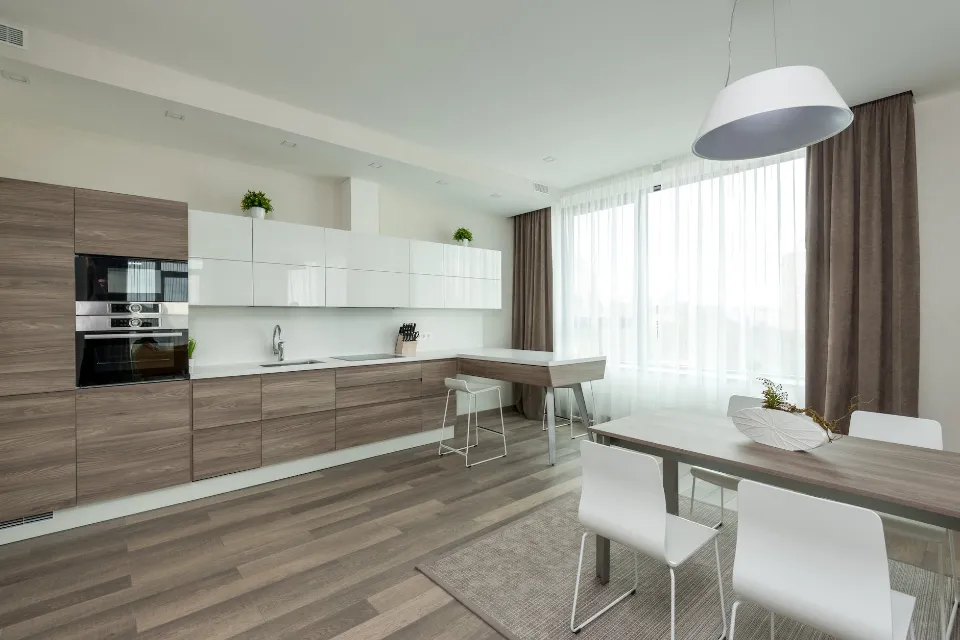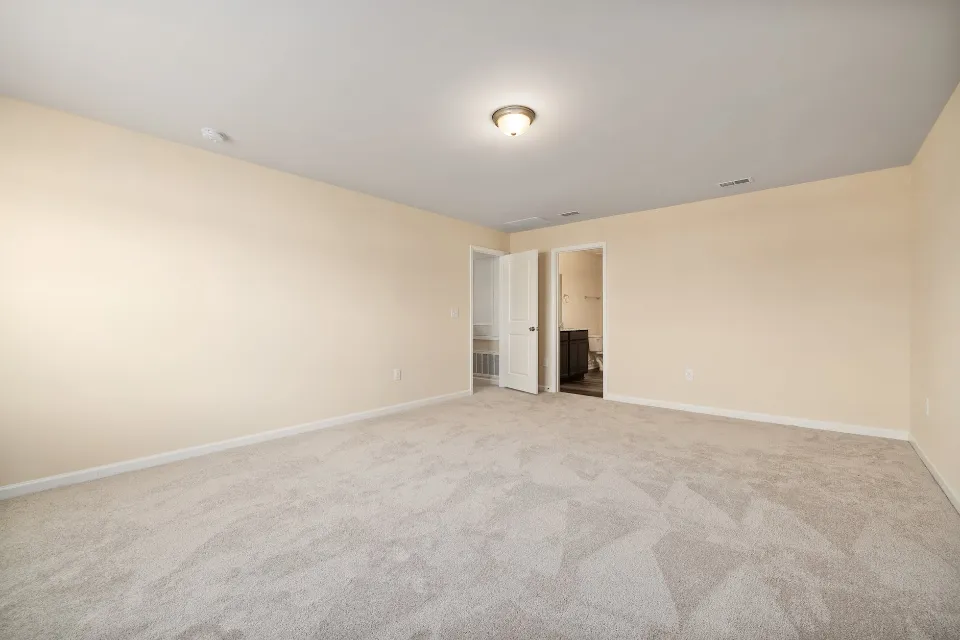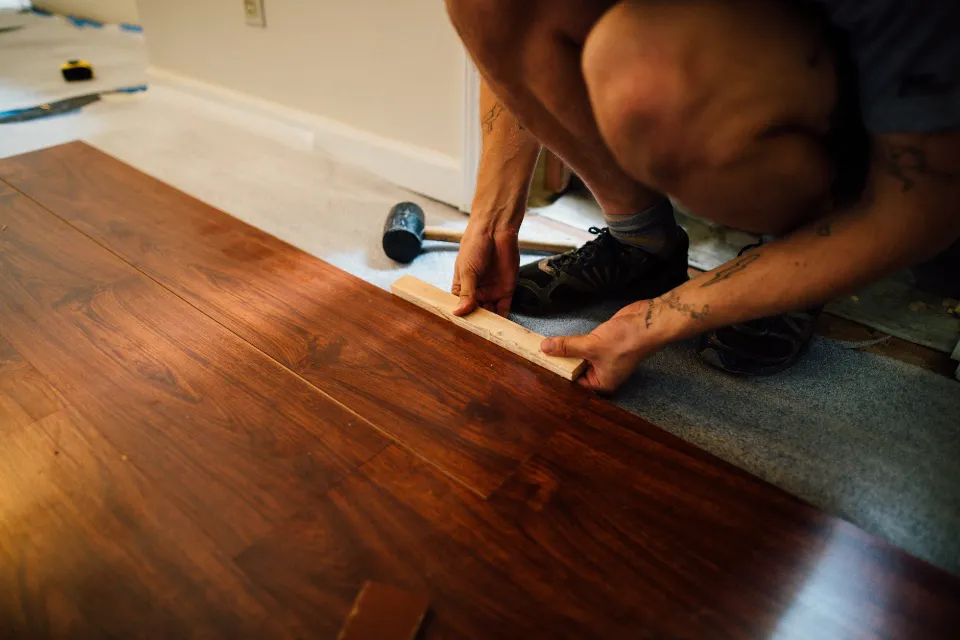If you want to install linoleum flooring by yourself, please follow this beginner’s guide!
Because of its strength and capacity to improve a space with minimal effort, linoleum flooring can be an excellent option. Vinyl flooring is waterproof, whereas linoleum is water-resistant. Linoleum flooring installation requires some patience and preparation.
Discover how to install linoleum flooring, from the right preparation to a reliable sealant, before you cover your current floors with it.
Further Reading:
What Do You Need?
Tools
- Tape measure
- Level
- Hammer or pry bar
- Screwdriver
- Utility knife
- Notched trowel
- Floor roller
Materials
- Linoleum
- Marking paper/tape measure
- Pencil or marker
- Flooring adhesive
- Linoleum sealant
- Caulk

How to Lay Linoleum Flooring?
Here is the instruction to install linoleum flooring:
Measure the Room
Grab a tape measure and write down the dimensions of the room so you know how much linoleum you’ll need. When you measure, be sure to buy about 10% more linoleum than the actual dimensions.
If you opt to remove the old flooring, be sure to pay attention to the subfloor. Since linoleum flooring doesn’t adhere well to rough wafer boards, you’ll probably need to add a layer of plywood before ripping up the previous flooring.
Let Linoleum Acclimate
Linoleum typically needs 24 to 48 hours to adjust to the conditions in your home. It’s crucial to allow linoleum to settle before installing it because it can slightly expand and contract. When installing linoleum flooring, it’s crucial to leave an extra ¼-inch on each side to accommodate expansion and contraction.
Remove Furniture, Baseboards, Appliances, and Doors
Before putting in linoleum flooring, make sure to remove all of the furniture, baseboards, appliances, and doors. To take out the baseboards and doors, you’ll need a hammer or a pry bar. When installing linoleum floors, you shouldn’t try to maneuver around doors.
Fix and Level the Existing Floor
Because linoleum has a backing, it’s not always necessary to use an underlayment, but you’ll need to make sure your old floor is level and free of any pocks or bumps. If a bump isn’t fixed, you’ll notice it later and the linoleum may crack. Before continuing, check the floor with a level to make sure it is level.

Mark Cut Lines on Linoleum
Right, cut once and measure twice? This DIY tenet holds true when installing linoleum flooring. To prevent any errors, mark the cut lines on the linoleum before you start cutting. By using a compass, you can find the exact location of the sun.
Cut Linoleum
Linoleum flooring can be cut with a utility knife, but a jigsaw is also a viable option. Make sure to score the flooring with a utility knife before making the cut.
Lay Linoleum
Use a notched trowel to begin applying flooring adhesive to the subfloor or current flooring. You can find flooring adhesive and a notched trowel at a home improvement or hardware store. Be sure to apply a thin, even layer of flooring adhesive before installing the linoleum. When installing linoleum, wipe away extra flooring adhesive with a damp cloth.
Roll Linoleum and Apply Sealant
Utilizing a floor roller is required after the linoleum has been laid. Check with your hardware or home improvement store to see if you can rent a floor roller because you probably don’t want to buy one for a one-time project.
To avoid peeling or potential water damage, you should apply sealant between seams. It’s a great way to save money.
Let the Floor Sit for a Day and Replace the Removed Items
To ensure that the linoleum flooring’s flooring adhesive does its job, keep all foot traffic off the floor for a full day. You can start replacing the appliances, doors, baseboards, and furniture you removed from the room after a day.
Caulk the Floor Where Needed
As you put the room back together, some areas might require caulking. Pay close attention to the areas around toilets, baseboards, and other water-using appliances. The best caulk is made of latex or acrylic latex.

What is Linoleum Flooring?
Linoleum flooring is an affordable, durable, and long-lasting material made from canvas, linseed oil, powdered cork, pine resin, and mineral fillers. To properly fit a room, a professional will need to cut this material, which typically comes in sheets. A flooring adhesive is then used to secure the flooring material to the underlayment or current flooring in the room.
Due to its lower price compared to other flooring options and its anti-microbial and biodegradable qualities, real linoleum is a preferred option for remodeling a room.
Is It Hard to Install Linoleum Flooring?
Interlocking linoleum tiles and planks are relatively simple to install yourself, especially in a straightforward space like a square-shaped room, if you’re reasonably handy, have or can invest in the right tools, and can practice patience when completing a DIY project.
Although it may be worthwhile to spend more money for a professional installation if you choose roll-out sheets or tiles that must be perfectly aligned and attached to the subfloor using adhesives.
How Much Does It Cost to Install Linoleum Flooring?
Linoleum flooring costs about $2 to $7 per square foot, with an average project ranging from $955 to $3,755 total. Materials can cost anywhere from $1 per square foot for basic linoleum to over $14 per square foot for more durable linoleum in distinctive or custom colors or designs.
An additional $3 to $10 per square foot, or $36 per hour, is spent on labor.
Conclusion: Install Linoleum Flooring
Since linoleum is currently fashionable, it would be a good idea to use it in a bedroom or sunroom that could use a little facelift. There are numerous types of linoleum to choose from that will fit your aesthetic without making your floors look like they belong in your grandparents’ home, and it can last for about 40 years with proper installation.
Calling a professional to fix your floor or adding a layer of plywood on top of the subfloor may be necessary if it is uneven or has bumps and divots. By coming in and repairing the subfloor, a professional can save you some time.
FAQs
Does Linoleum Need to Be Glued Down?
Linoleum is installed with adhesive, but depending on how smooth the underlayment or floor is below, you might only need to glue around the edge of the backside of the linoleum sheets or you might need to glue everything.
What Do You Put under Linoleum Flooring?
A plywood underlayment is ideal for linoleum, although you can use a backer board or other underlayment products. Make sure you have space to install an underlayment under or around appliances because it raises the floor’s level.





